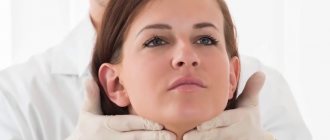The state of domestic medicine and the approaches it uses to treating most diseases are twofold. On the one hand, our doctors, with meager technical support, manage to save completely hopeless patients. On the other hand, most doctors in district clinics demonstrate a striking lack of flexibility in their practical work, which is why the treatment of many diseases has all the signs of Russian roulette, where human life is the stake. When a problem concerns adults, we most often humbly shrug our shoulders and quietly hope that the trouble will bypass our family and friends. But if deadly pathologies are diagnosed in newborns, hopelessness settles in the heart.
Hydrocephalic syndrome, which most people know only by hearsay, is surrounded by a large number of myths and rumors. Most concerned mothers passionately describe the terrible consequences of this disease, without thinking much about how much of the information they have corresponds to the truth. The reasons for such an irresponsible attitude are worthy of a separate discussion, but today we will try to understand what it is - hydrocephalic syndrome. An incurable disease or pathology that can and should be fought.
Causes of increased cranial pressure
Increased pressure in the head does not occur without reason. The resulting hypertension syndrome is the result of negative external or internal influences. These include:
- traumatic brain injury;
- failure of the endocrine system;
- central nervous system infections (meningitis, encephalitis);
- complications after infections (otitis media, bronchitis);
- hydrocephalus, pathology of the venous sinuses;
- unfavorable course of pregnancy (toxicosis, complicated, protracted labor);
- long-term use of certain medications (antibiotics, contraceptives);
- hematomas and neoplasms, cerebral edema.
Modern medicine believes that hypertension syndrome manifests itself as a result of impaired outflow of cerebrospinal fluid. This is the name given to the cerebrospinal fluid that bathes the brain. CSF production and absorption must be in balance. Violation of the reverse outflow of this fluid leads to its stagnation in the ventricles of the brain.
Poststreptococcal glomerulonephritis has a worse prognosis in adult patients. Urinary abnormalities persist in 40% of cases, and continued healing marches after treatment of the acute phase of the disease are subsequently associated with scarring of the kidney tissue. Thus, the prognosis depends on the age of the patient and the degree and extent of damage to the kidney tissue by the antigenic stimulus. Post-infectious glomerulonephritis associated with implanted vascular graft infection has a good prognosis if the bacterial infection is eradicated, i.e. depressed.
What is hypertension
Excess cerebrospinal fluid can occur due to increased synthesis or impaired outflow. Against the background of these pathological changes, blood circulation processes in the brain are disrupted, which can provoke the development of serious complications. Hypertension syndrome and hypertension syndrome are not synonyms, but names of different diseases:
- hypertension - increased intracranial pressure;
- hypertension - increased blood pressure.
But with arterial hypertension there are signs of hypertension.
Diagnosis of the disease
It's impossible to do on your own. Scientists have not yet invented a device that is simple and accessible to non-professionals. To measure it, you will have to go to the doctor. Modern research methods are painless and allow an accurate diagnosis of the patient: is it hypertension syndrome or another disease.
- Puncture of the spinal canal or ventricles of the brain. The most reliable type of disease diagnosis. Requires special training from a doctor and is difficult to perform.
- Ultrasound of blood vessels. Their condition gives an idea of the presence of disturbances in the outflow of venous blood from the skull.
- MRI of the head. Determines the enlargement of cavities with fluid and changes in tissue along the edge of the ventricles in the brain.
- Fundus examination. The condition of the veins, their dilation and tortuosity provide a clear picture of the increase in pressure inside the brain.
- EchoEg. Evaluates the general condition of the brain.
The results of all studies allow the doctor to make an accurate diagnosis and prescribe the necessary treatment. The most complete picture of the state of the brain is provided by a spinal puncture.
Post-infectious glomerulonephritis, which usually manifests as impaired renal function, can lead to renal failure, even after 10-20 years. Therefore, these patients should be monitored regularly. Apart from the above mentioned typical clinical course, i.e. Infectious infection is most often followed by a period of latency, i.e. a period without clinical symptoms, accompanied by swelling, decreased urine output, dark urine with blood, fluid accumulation in the body, fluid overload, high blood pressure, headache and headache, and characteristic laboratory signs during urinalysis.
Possible complications and consequences
Regardless of the age at which hypertension syndrome is detected, in the absence of adequate therapy, the consequences of the disease are dangerous for both adults and children. Children experience disturbances in mental and physical development, urinary and fecal incontinence, bulging of the fontanel, epileptic seizures, and even death. In adult patients, the nervous system suffers, vision and hearing are impaired. A coma may develop and death may occur.
Hypertension syndrome is a serious disease that threatens the patient’s life in the absence of adequate drug therapy. When the first signs of hypertension appear, you must contact your doctor and begin a treatment course immediately.
Treatment and prevention
Reduced brain pressure is associated with eliminating the causes of its increase. Combination treatment can relieve hypertension. The first-priority drugs to alleviate the condition are diuretics. Furosemide or Lasix is taken orally. Potassium-containing medications help normalize brain nutrition, the most common being asparkam. To speed up the effect, it is possible to replace taking tablets with intramuscular or intravenous injections.
The urine may be opalescent, brown, or even red in color. varies from 0.5 to 2 g per 1 square meter of the patient's body surface area over 24 hours and the ratio of the size of proteinuria to creatinine in the urine is lower than the urinary sediment contains, in addition to red blood cells, white blood cells, and tubular cells. There are also characteristic casts containing red blood cells and hemoglobin, leukocyte casts and granular casts. Red blood cell casts are characteristic of all types of glomerulonephritis, but together with the clinical picture described above, they are typical of glomerular disease with sudden onset.
Removal of acute signs of the disease leads to the need to continue treatment. Diacarb finally normalizes cerebral pressure, reducing the production of cerebrospinal fluid. Cavinton, Cinnarizine improve cerebral circulation.
Unexpectedly manifested hypertensive syndrome requires immediate administration of a solution of mannitol and urea. The use of these drugs gives a quick effect of reducing pressure and long-term preservation of the achieved result (up to eight hours).
Antibody-inducing antibody titers usually increase within 1-2 weeks. Serum complement concentrations usually decrease during the active phase of the disease. Complement levels returned to normal over the next 6-8 weeks, in up to 80 percent of patients with poststreptococcal glomerulonephritis, but almost never in membranoproliferative glomerulonephritis. Detection of cryoglobulinemia usually persists for several months, whereas circulating immune complexes in the patient's circulation may not be detected until several weeks after the onset of the disease.
Drug treatment is supplemented with other procedures.
- Exercise therapy (physical therapy). Daily walking, swimming, normal physical activity.
- Massage of the collar area.
- Acupuncture.
- Circular shower.
- Electrophoresis and magnet for the cervical-collar area.
Diagnosis and treatment methods
Diagnostic methods
Having registered elevated blood pressure readings, it is necessary to take two more repeated measurements with an interval of two minutes. The second measurement is taken on the opposite hand, and the third on the one where higher values were recorded.
The possibility of “white coat syndrome” in a child should be considered. In this situation, you can get false blood pressure readings. After talking with the child for a few minutes on abstract topics, repeat measurements should be taken.
If you suspect hypertension, you need to collect anamnesis very carefully. The presence of cardiac diseases in relatives, as well as concomitant renal pathology, must be clarified. Hormonal imbalances also often contribute to increased blood pressure. If there is evidence of taking narcotic drugs and hormones, the possibility of an increase in blood pressure in such a situation should be taken into account.
Daily blood pressure monitoring will help make a diagnosis and give recommendations for treatment, and will also allow you to determine the magnitude of the increase in blood pressure, the frequency and duration of episodes of hypertension.
To exclude the secondary nature of hypertension, a thorough examination of the kidneys is performed. To do this, the child needs to undergo a urine test, as well as perform an ultrasound of the kidneys to study the blood flow in the renal vessels. It will be necessary to determine the electrolyte composition of urine and blood, and the hormonal profile will also be examined.
An ECG and ECHO-CG are prescribed to exclude the presence of heart pathology.
If a tumor is suspected, CT and MRI are performed.
Determination of glucose tolerance allows you to exclude the presence of diabetes mellitus.
The child should be examined by an ophthalmologist to rule out fundus pathology.
Athletes should be examined especially carefully. Only after a thorough diagnostic search will it be possible to suspect dangerous diseases and determine the cause of hypertension.
The final diagnosis of arterial hypertension in children and adolescents is made after a threefold increase in blood pressure is detected. The first symptoms and signs of the disease can be detected during a regular medical examination with a doctor. Pathological changes are confirmed after daily monitoring of pressure and taking tests with physical and psycho-emotional stress.
Self-prescription of medications for children is strictly prohibited. The dosage and type of medicine can only be prescribed by a doctor, based on examination, test results and examinations.
Moderate childhood hypertension is not treated with medication. In this case, the following actions are taken:
- absence of stressful and negative psycho-emotional effects;
- limiting the child’s time spent on the computer and TV;
- full healthy sleep, adherence to the daily routine;
- nutritional adjustments to reduce excess weight;
- restriction in salt intake;
- appropriate level of physical activity, daily walks in the fresh air;
- giving up bad habits (for teenagers).
Severe hypertension in adolescents is treated mainly with similar drugs that are prescribed to adult patients, only in a lower dosage. The following groups of drugs are used:
- ACE inhibitors and sartans;
- beta-1-blockers (selective drugs);
- calcium channel blockers;
- diuretics (diuretic drugs of plant and synthetic origin);
- sedatives;
- vasodilator medications;
- tranquilizers (if necessary).
With the development of malignant hypertension in adolescents and children due to OSA, treatment with medications is not advisable. This type of pathology is difficult to treat, so it is recommended to consult a somnologist who will help solve sleep problems, normalize blood pressure and improve overall well-being.
magnetic therapy, massage of the collar zone, SMT therapy, galvanic collar according to Shcherbak. To restore the vegetative functions of the body, air baths, heliotherapy, and thalassotherapy are used.
After treatment, the patient undergoes a rehabilitation period. It consists of 4 stages:
- early rehabilitation: carried out in conjunction with treatment (physical therapy, medicinal baths, walks in the fresh air, physiotherapy);
- late rehabilitation: treatment in sanatoriums using physiotherapy, massage;
- recovery period: elimination of risk factors for the development of hypertension (adjustment of nutrition, daily routine, excess weight loss, psychotherapy);
- dynamic observation by a cardiologist: regular examination by a doctor is required at least once every 3-4 months for 3 years after recovery.
If left untreated, the following complications may develop:
- organic brain damage;
- convulsions;
- eye disease;
- heart pathologies;
- serious kidney damage;
- cerebral hemorrhage;
- eclampsia.
Manifestation of the disease in children
Ultrasound examination will help distinguish acute disease, in which we usually find normal or slightly enlarged kidneys, from acute relapse of chronic renal failure, in which the kidneys are small. The extent of kidney function can be determined by determining the patient's serum creatinine level or by calculating creatinine clearance. Although glomerular filtration usually returns to normal values within 1 to 3 months, it may persist for 6 to 12 months and even for several years.
Identifying hypertension in children is much more difficult than in adults. Children cannot explain their feelings. Young children cannot say anything at all. Doctors have to rely on the mother’s complaints, their observations and research results. Parents should contact a neurologist if their child:
- sleeps poorly;
- cries a lot;
- often shows anxiety;
- sweats for no reason.
The combination of these symptoms with a sudden increase in temperature and vomiting indicates the presence of a headache. Attacks may occur several times a year. Without treatment, their frequency increases to several times a month.
Then, transient changes in urinary sediment may appear even if the disease is less infected by the respiratory system. There is no specific treatment for most cases of acute or acute glomerulonephritis. Immunosuppressive drugs and corticosteroids are ineffective and can sometimes even impair natural healing. If there is still a bacterial infection in the patient's body, when it comes to kidney inflammation, it is absolutely correct to use full antibiotic coverage for treatment, and all other secondary causes need to be treated.
A neurologist can diagnose hypertension in newborns during the initial examination. This is clearly indicated by the increasing size of the fontanel and open sutures between the bones of the skull. After examining the fundus and performing neurosonoscopy, the diagnosis is confirmed or removed.
I would like to reassure my parents. Increased cerebral pressure does not affect the mental and physical development of the child. It is possible to cure hypertension syndrome in children by following the doctor’s recommendations. To maintain the results obtained, you must remember to consult a neurologist twice a year.
If elevated levels of nitrogen catabolites and metabolic acidosis are present, the patient's protein intake should be limited. Sodium intake is limited only during body circulation, swelling or severe hypertension. Here, the use of diuretics, especially so-called loop diuretics and thiazides, may be useful in maintaining a wide volume of extracellular fluid. Hypertension requires vigorous treatment. So-called hypertensive encephalopathy often requires treatment by intravenous administration of effective antihypertensive drugs to lower blood pressure before oral medications can be used.
In medicine, hypertensive syndrome usually refers to secondary, or symptomatic, arterial hypertension.
According to statistics, in more than 90% of cases the cause of persistently high blood pressure cannot be determined, so a diagnosis of “essential (primary) arterial hypertension” is made. In other cases, hypertension is caused by a disease of any organ involved in blood pressure regulation. That is, one of the signs of this disease will be increased blood pressure with its characteristic symptoms. This symptom complex is hypertensive syndrome. It is often difficult to lower blood pressure in these cases.
Severe kidney failure should be treated with an artificial kidney. Nephrotic syndrome is characterized by a complex of disorders following a severe, long-term increase in glomerular protein permeability. Main features: proteinuria, subsequent hypoalbuminemia, generalized tumor and hyperlipidemia. Nephrotic syndrome can occur at any age. It is most common among children aged 1.5 to 4 years. Boys are particularly affected at an earlier age, but they gradually disappear as they age.
Causes
The causes of hypertensive syndrome can be either congenital or acquired. These include:
The total number of risk factors per pregnant woman ranged from zero to six, and the highest proportion of pregnant women in the study had one to two risk factors. More information about assessments for pregnant women can be found here.
It was observed that 26 pregnant women had their first prenatal visit, which was positive due to the nature of this consultation for disease prevention and health promotion of pregnant women. Due to the core features that define preeclampsia, edema is considered only when it presents as anasarca or is present in the arms and face, and should be separated from gravitational edema. It is worth noting that none of the pregnant women presented proteinuria as a result of the urine test, but 45 were still awaiting the result of this examination.
Hypertensive syndrome is very common in neurology in young children with perinatal encephalopathy.
Symptoms
Hypertension syndrome in children has the following symptoms:
- restless behavior;
- sleep disorders;
- dizziness;
- crying that seems unreasonable at first glance;
- constant attacks of headaches in children, and after them - vomiting;
- sweating;
- unstable temperature.
The well-being of children with hypertensive syndrome greatly depends on the weather.
The presence of edema was identified and classified by specialists who consulted only 19 pregnant women, of whom five presented with moderate edema, 11 with moderate edema and 3 with severe edema. There is a need for a better description by a specialist regarding edema, its location and type, so that there is a better differentiation of physiological from pathological edema.
Notably, the environment in the prep room was noisy and relatively noise-intensive as the hallways were full and the lack of environmental conditioning was not conducive to tranquility. There was no consistent information about the calibration of the device's devices, however, according to the researchers' observations, one of them had an obvious defect in the aneroid.
Treatment
Treatment of the syndrome in children should be carried out up to a year to prevent developmental delays.
- Hypertension syndrome in children is treated by reducing the production of cerebrospinal fluid and accelerating venous outflow with diacarb, furosemide (Lasix), 25% solution of magnesium sulfate, 50% solution of glycerin, sorbitol, aminophylline and rigematin. All these remedies are designed to reduce intracerebral pressure.
- Children suffering from hypertension syndrome also need anti-inflammatory, desensitizing and resorption therapy measures; in the absence of a brain tumor, physiotherapeutic procedures, for example, proper massage. Children need to be given B vitamins, aminalon, glutamic acid, lipocerebrin, nootropil.
- In autumn and spring, prevention of hypertensive syndrome in children is useful - courses of dehydration, anti-inflammatory, and restorative therapy.
Treatment of sick children during the acute period must be carried out in a hospital setting. With frequent exacerbations, it is advisable to educate children in sanatorium-forest boarding schools.
In terms of the professionals who were in the preparation room during the study, three nursing practices could be assessed who performed the procedure before the patient went to the prenatal clinic. The results show that only 10 of the 23 procedures contained in the checklist were performed by at least one of those participating in the study, resulting in an average of 7.33 procedures performed.
Therefore, the quality of prenatal care cannot ignore the tools available to accomplish this task. Regarding skin color, the results of this study support the results of other studies that show the prevalence of non-white pregnant women. Regarding the extreme age of reproductive age, the results of this study are similar to those of the study conducted in the Ceará state.
Children who are sick with hypertension syndrome are required to undergo a preventive examination. You need to visit an ophthalmologist for a fundus examination at least twice a year. An x-ray of the skull is required once every 2-3 years. Children who have suffered inflammatory diseases of the brain or who have had brain injuries should be observed at a dispensary.
Most of the women studied had a low level of education, with particular concern given that pregnant women in this situation are likely to have difficulty understanding instructions on how low education plays a critical role in relationship commitment associated with adequate health status, which compromises the provided help.
Research shows that the harmful effects of smoking are varied in pregnant women, but there is an effect of nicotine on the cardiovascular system, which releases catecholamines in the maternal blood, leading to tachycardia, peripheral vasoconstriction and decreased placental blood flow, negatively affecting blood pressure control of the pregnant woman .
Characteristics of the syndrome
High blood pressure affects the entire body and is the main damaging factor. The elements that make up the syndrome include:
- High blood pressure (exceeds 140/90 mmHg).
- High levels of bad cholesterol in the blood.
- High loads on the left ventricle (according to ECG).
- Atherosclerosis of arteries (aorta, iliac, carotid).
- The appearance of protein in the urine.
- As a result of prolonged exposure to a damaging factor, the kidneys, myocardium, and retina, which are target organs, are affected.
Left ventricular hypertrophy, retinopathy (vascular disorders of the retina), hypertensive nephropathy (impaired kidney function) are observed.
New cases are more common in children than in adults. Nephrotic syndrome can occur in primary glomerular disease. Familial nephrotic syndromes occur in a typical rapidly developing form - the so-called Finnish type. Familial nephrotic syndromes have an autosomal recessive pattern of inheritance and usually require dialysis for 1 year. Proteinuria occurs when there is functional damage to two basement membrane barriers: impaired permeability for large molecules and impaired electrostatic charge and permeability for low molecular weight proteins.
It is important to know that a person may not feel high blood pressure and may not be aware of changes occurring in the body. In this case, it is possible to detect violations only through hardware research.
But a number of signs may appear already in the early stages of the disease. These include the following symptoms:
- headache;
- redness of the facial skin;
- flickering of spots before the eyes, blurred vision, decreased visual acuity;
- rapid heartbeat, which may appear intermittently;
- predominance of night urination over daytime urination.
At later stages the following manifestations occur:
A number of diseases are associated with nephrotic syndrome. The so-called minimal disease changes, according to modern concepts, are caused by an imbalance in subpopulations of T cells. An increase in the number of cellular organelles may be demonstrated. Focal glomerulosclerosis begins in the glomeruli, so a kidney biopsy does not need to be taken. Consequently, global sclerosis can lead to glomerular atrophy. In membranous glomerulonephritis, immune complexes are found in the renal glomeruli, which cause renal glomerular sclerosis and gradually lead to renal failure.
- angina pectoris;
- heart failure;
- signs of encephalopathy;
- ischemic stroke.
Symptoms of high blood pressure in a child
Quite often, the symptoms of the pathology are erased, which prevents parents from suspecting it in a timely manner and starting to examine the child.
Moderate hypertension in children manifests itself in the following:
- BP figures are overestimated;
- Headaches, which leads to fatigue too quickly;
- Body weight increases significantly.
If, when measuring blood pressure, elevated values are established, then in the absence of effective therapy, the symptoms of the disease worsen to a pronounced form, accompanied by more serious symptoms:
- The child constantly complains of feeling unwell;
- Headaches become more intense;
- Memory suffers, which is caused by a lack of blood supply to the brain tissue;
- There is pain behind the sternum, accompanied by tachycardia;
- Systolic pressure increases: in a child of the first year of life up to 112 mm. rt. Art., up to ten years of age - 135 mm. rt. Art., in older children 145 – 150 mm. rt. Art.
- During the examination, the doctor records a rapid heartbeat and the borders of the heart expanded to the left.
Hypertensive syndrome in children, caused by kidney problems, is manifested by symptoms of malignant hypertension. It is noted:
- The presence of long-term elevated blood pressure;
- The prescribed therapy does not give the desired effect;
- A large number of deaths are recorded at an early age.
The pressure can change abruptly or smoothly. If blood pressure numbers spontaneously increase, this can trigger the development of encephalopathy, as well as heart and kidney failure.
Timely prescribed therapy for the treatment of benign and malignant hypertension will prevent the formation of complications.
Depending on the age of the child, the criteria for making a diagnosis are:
- 3–5 years – Blood pressure should not rise above 116/70 mm Hg. Art.
- 7–9 years – blood pressure does not rise above 125/75 mmHg for long. Art.
- 10–13 years - blood pressure should not exceed 130/80 mm Hg. Art.
- Adolescent over 14 years old - blood pressure should not exceed 135/85 mm Hg.
Pressure 140/90 mm Hg. Art. considered pathological.
In the pathogenic process of the pathology under consideration, considerable importance is given to the excessive growth of the muscular layer of the capillary wall, along with dysfunction of the internal vascular layer, at the level of which inflammation develops. In addition, thrombosis occurs in the capillary bed. Vasoconstrictor substances are produced in excess.
As a result, oxygen starvation develops, in response to which a spasm of small pulmonary vessels occurs, the resistance of the vascular bed increases, and the pressure in the pulmonary artery system increases. The result of all this is an increase in the load on the heart, which in turn leads to heart failure.
Pulmonary hypertension in a newborn is manifested by retraction of the pliable areas of the chest. The frequency of respiratory movements increases. The skin takes on a bluish appearance. Moreover, this cyanosis can be different in individual areas of the body. This is explained by the fact that with an open ductus arteriosus, blood oxygen saturation in the right brachial artery will be better than in the descending aorta, i.e. The baby's legs and left arm may be bluer. A special feature is the fact that oxygen therapy in this case does not correct the situation.
The baby's blood pressure is usually reduced. When listening to the heart, a systolic murmur may be detected due to tricuspid valve insufficiency.
Hypoxemia in this disease can progress quite quickly, and some babies, even while on artificial ventilation, soon die. Survivors usually improve within 1 week. However, there are cases when the disease dragged on for 2-3 weeks.
Pulmonary hypertension in newborns is diagnosed based on clinical data. The disease is suspected, first of all, in babies born at term or post-term and with cyanosis and/or hypoxemia.
The absence of an increase in blood oxygen saturation during oxygen therapy also suggests the pathology in question.
Increased pulmonary artery pressure can be confirmed by echocardiography and Doppler ultrasound. In addition, such research methods help to exclude the presence of congenital heart defects, some of which can be confused with the pathology in question.
X-rays can reveal the presence of diseases that can cause the development of pulmonary hypertension.
Diseases that cause increased blood pressure
The list of these pathologies is quite large (more than 50). These are mainly diseases of the kidneys, blood vessels and heart, nervous and endocrine systems:
- glomerulonephritis (acute and chronic);
- polycystic kidney disease;
- hydronephrosis;
- kidney tuberculosis;
- stenosis of the renal arteries;
- urolithiasis disease;
- kidney amyloidosis;
- pyelonephritis;
- nephropathy in diffuse connective tissue diseases (lupus erythematosus, scleroderma, periarteritis nodosa, etc.)
- diabetic nephropathy;
- pheochromocytoma;
- hypercortisolism;
- pathologies of the thyroid gland;
- adrenal diseases;
- metabolic diagnosis (or metabolic syndrome), characterized by disorders of lipid, purine and carbohydrate metabolism;
- hypoxia;
- heart defects;
- porphyria;
- erythremia;
- late toxicosis during pregnancy.
The mechanisms for increasing and maintaining pressure differ in different diseases.
In all these cases, we find characteristic pathological changes in the kidneys, which are observed in an electron microscope. Early evidence of nephrotic syndrome, discovered by patients themselves, is the detection of raw urine. When tested, proteinuria is usually greater than 2 g per 1 square meter of body surface area in one day and the ratio of urine protein to creatinine is randomly tested. Other symptoms include anorexia, malaise, swollen eyelids, abdominal pain, muscle loss masses and swelling.
The pressure in pheochromocytoma reaches especially high values. With bilateral damage to the adrenal glands, hypertension has a malignant course with a high probability of developing crises.
In some cases, most often with diseases of the central nervous system, not only blood pressure may rise, but also intracranial
Local fluid retention may be a reason to seek help because they are associated with the following difficulties: difficulty breathing, chest pain, swelling of the scrotum, knees, ascites, sometimes abdominal pain in children caused by swelling as a result of the mesentery. The swelling often occurs during the day - morning swelling of the eyelids, disappearing in the evening and swelling around the ankles. Liquid accumulates mainly according to Starling's laws. Parallel white streaks in nails represent clinical findings of unknown origin.
Clinical manifestations of ICP are called “hypertension syndrome”, and the main reasons for its development are as follows:
- head injuries (craniocerebral);
- infectious diseases of the central nervous system;
- endocrine pathologies;
- consequences of certain infections (bronchitis, otitis);
- severe toxicosis during pregnancy, prolonged labor;
- hydrocephalus, or cerebrospinal fluid hypertension (dropsy in the head);
- tumors, hematomas, cerebral edema;
- cervical osteochondrosis;
- meningitis;
- long-term use of contraceptives and antibiotics.
According to most doctors, the main cause of hypertension syndrome is a violation of the outflow of cerebrospinal fluid (CSF) and its stagnation in the brain.
Children may develop orthostatic hypotension or even shock. Care must be taken to reduce the amount of muscle mass that may be masked by the tumor. Oliguria or even acute renal failure can develop with hypovolemia and decreased blood supply to the kidneys - in exceptional cases, an orogenal-urinary form of acute renal failure may occur.
With long-term nephrotic syndrome, a number of clinical syndromes can develop: malnutrition, including primarily a lack of protein in the body, brittle hair and nails, alopecia, slowing of body growth, bone decalcification, loss of sugar in the urine, loss of various amino acids in the urine, syndromes associated with potassium deficiency myopathy Decreased serum calcium, tetanus and decreased metabolism. Symptoms of peritonitis may also occur, and widespread infections are common. Coagulation disorders, together with decreased fibrinolytic activity and occasional hypovolemia, are responsible for an increased risk, including severe renal thrombosis.
Causes
The rise in pressure is the response that is created when a stressful situation occurs.
As a result, hormones begin to be produced by the higher centers of the nervous system. They affect the vascular wall, which spasms. High levels of aldosterone lead to sodium and water retention in the body. Subsequently, fluid accumulates that would normally be excreted by the kidneys. The amount of water in the vascular bed increases, this leads to an increase in pressure. Over a period of time, thickening of the blood, narrowing of the lumen in the vessels and thickening of their walls are noted. Such changes in the body lead to a persistent increase in vascular resistance. As a result, arterial hypertension becomes stable, and its condition already becomes irreversible. As the disease progresses, the walls of blood vessels become more permeable, which leads to the development of changes in various organs and tissues.
The causes of hypertension in childhood are:
- excess weight;
- wrong lifestyle;
- frequent stress;
- aggravating heredity;
- taking certain medications;
- chronic diseases.
Unlike adults, children do not suffer from atherosclerosis, and therefore it is not among the reasons for the development of hypertension. The main problem is excess weight and varying degrees of obesity. Every year, up to 20,000 new cases of overweight in children are recorded. Obesity develops at any age, but most often it is typical for urban girls aged 10-13 years.
In addition to this, many teenagers smoke and drink alcohol. A large amount of salty food also has a negative effect. Hypertension in children also appears with constant exposure to stress. The risk group most often includes those who have an excitable nervous system and an unbalanced psyche. In many cases among young men and adolescents, mood swings are associated with hormonal changes during puberty.
If there have already been cases of hypertension in the family among close relatives, then, with a high degree of probability, the child will develop the same thing. Under the influence of provoking factors, the disease can occur in adolescence. Heredity is especially strongly transmitted through the maternal line.
When treating with certain drugs, it is important to consider the side effects and the age at which they can be given to a child. Vasoconstrictor drops to relieve nasal congestion during a runny nose can increase blood pressure, which provokes the appearance of symptoms of hypertension.
After receiving a skull injury, some children experience pressure surges for a long time. In addition, chronic diseases are also taken into account. It is believed that sinusitis and caries can provoke symptoms of hypertension. Among kidney diseases, a negative effect on blood pressure is reflected in the presence of a history of glomerulonephritis and pyelonephritis.
In children, high blood pressure can be caused by various factors. Most often this is a kidney pathology.
It is customary to classify the causes of childhood hypertension depending on the age of the child:
- In newborns and infants - disorders in the structure of the kidneys of a hereditary nature, a tendency to thrombus formation in the renal arteries, hypertension due to various hemodynamic reasons (pathology of the aorta, heart disease, etc.);
- Preschool children – narrowed aorta and blood vessels, as well as inflammation and neoplasms of the kidneys;
- Age category 6–10 years – the presence of kidney pathology and narrowing of their arteries;
- 10 years and older – parenchymal renal pathology and signs of primary hypertension.
There are pathologies that increase the risk of hypertension in children:
- Endocrine disorders;
- Systemic diseases;
- Pathology of connective tissue structures;
- Diseases of the central nervous system.
If at least one of the above factors is present, secondary arterial hypertension is diagnosed.
Primary hypertension is often detected in the presence of one of the predisposing factors:
- Genetic predisposition;
- Prolonged emotional stress;
- Increased body weight;
- Metabolism problems;
- Lack of regulation of the homeostasis system.
There are a number of reasons that provoke a persistent increase in blood pressure and the development of hypertension in a child.
- Chronic intoxication of the body due to infectious diseases. Many diseases in children, which occur in a chronic form and do not cause much concern, provoke a constant intake of toxins into the body, which causes neurotic disorders. Such problems are often the cause of childhood hypertension.
- Taking medications. Frequent use of certain medications can cause an increase in blood pressure. For example, vasoconstrictor drugs for a runny nose in children narrow blood vessels not only in the nose, but throughout the body.
- Hereditary factor (especially on the maternal side). The presence of hypertension in the child's relatives (mother, grandmother) increases the risk of developing childhood hypertension.
- Pathological changes in the autonomic nervous system due to traumatic brain injury.
- Emotional and psychological impact, hormonal disorders. Children's exposure to stress, overexertion, fear, as well as hormonal changes in the body during puberty often cause an increase in blood pressure.
The development of hypertension in children and adolescents is greatly influenced by lifestyle, habits, nutrition, and external conditions. About 70-90% of cases of increased blood pressure in a child are attributed to symptomatic hypertension. Those. indicators increase when symptoms of various diseases appear:
- autoimmune diseases;
- renal vessel stenosis;
- tumor formations;
- coarctation of the aorta;
- obstructive sleep apnea syndrome (OSA);
- dysplasia of the bronchi and lungs.
In 1-2% of children, the cause of hypertension is obstructive sleep apnea syndrome. This diagnosis is made when there is persistent sleep disturbance with cessation of breathing for more than 10 seconds. Children with chronic ENT diseases (adenoids, tonsillitis), overweight, and structural abnormalities of the facial skull are at increased risk. In the presence of OSA, the child is likely to develop persistent (malignant) arterial hypertension that cannot be treated.
After 6 years, primary hypertension most often develops. The disease manifests itself in the absence of other pathologies in the body.
The main risk factors for arterial hypertension in children and adolescents include:
- impressionability, emotional and psychological excitability;
- overweight, tendency to obesity, unhealthy diet;
- excessive salt intake;
- inactive lifestyle, frequent watching of TV and computer.
The causes of pulmonary hypertension in newborns are very diverse, but they are all united by the fact that they ultimately cause the development of hypoxemia, i.e. low blood oxygen saturation, which becomes a direct provoking factor in relation to the pathological condition in question.
The main of a number of reasons is perinatal asphyxia and hypoxia. In this case, a significant role is given to meconium aspiration syndrome.
The reason for the appearance of the described illness may be the early closure of the ductus ductus or oval window, which occurs, for example, as a result of a pregnant woman taking non-steroidal anti-inflammatory drugs. The disease can also occur as a result of polycythemia, a condition that causes obstruction of blood flow.
Often, a congenital hernia of the diaphragm acts as a causative factor of the disease. In such a situation, the left lung is quite hypoplastic, due to which a significant amount of blood flows into the right.
In addition to the above, high pulmonary hypertension in newborns can result from neonatal sepsis.
Manifestations of hypertension syndrome
- Expanding headaches are common. They usually begin at night or in the morning with heaviness in the head.
- Blood pressure jumps, and there are complaints of rapid heartbeat and increased sweating.
- Nervousness, rapid excitability for no reason.
- Nausea, regardless of food intake, which sometimes turns into vomiting.
- Fatigue sets in quickly even with low physical or mental stress.
- Difficulty breathing, shortness of breath.
- Pain in the spine.
- Goosebumps running through your skin.
- Muscle weakness.
- The appearance of blue circles under the eyes.
- Dependence of well-being on weather conditions.
Initial urges of the disease and symptoms
A sick person can be helped if the disease was identified by specialists at an early stage of its occurrence. But even if the disease is advanced, it is necessary to begin treatment to improve overall health and relief.
In addition to being used as a basis for accessing pregnant women with hypertension, it also guides their treatment planning 4, 5, 6. It is hypertension that is present before pregnancy or diagnosed before 20 weeks of pregnancy. This diagnosis is more difficult to make in women with hypertension without a previous diagnosis due to the presence of a physiological decrease in blood pressure that occurs in the first half of pregnancy.
Classification. It is classified as either significant or primary hypertension or secondary hypertension, taking into account the etiology and according to the levels of tension, into mild and severe hypertension 5, 6, 7. This classification is important because it identifies the patient at higher or lower risk during pregnancy , in addition to being behaviorally driven.
Let's look at the symptoms that indicate the presence of hypertension syndrome:
- Sudden attacks of headache or constant frequent pain. Painful sensations occur mainly in the morning and evening. There is a feeling of heaviness, pain and fullness in the head, from which a person can even wake up at night. The pain spreads throughout the head, so its exact location is impossible to determine.
- An attack of nausea appears, which can occur suddenly or be regular. This condition occurs mainly in the morning or after eating, regardless of whether it is fatty or not. There may even be vomiting.
- Partial loss of vision. With hypertension, vision begins to deteriorate. You begin to see double, and a foggy veil may appear. Reaction to bright light decreases.
- Instability of blood pressure. There are jumps in blood pressure, which is accompanied by an accelerated heartbeat and the appearance of profuse sweat on the skin. This attack often resembles a heart attack.
- Increased excitability and fatigue. Increased excitability occurs suddenly and without reason. Fatigue can occur even with minor physical exertion.
- Back pain and weakening muscle tone. Pain can affect all parts of the spine. Muscle weakness is a very unpleasant symptom. Partial paresis occurs, which in symptoms resembles paralysis of one side of the body.
- Symptoms of weather dependence. It is people with hypertension syndrome who suffer from the variability of weather conditions. When atmospheric pressure changes, a person’s well-being begins to deteriorate sharply.
- Symptoms of hyperesthesia. A person constantly feels an unpleasant subcutaneous itch, which causes irritation and excitability. “Goosebumps run across the skin,” thus the skin also becomes hypersensitive.
It is important to know! If you find yourself with similar symptoms of more than three types, we advise you to immediately contact a neurologist.
Syndrome in children
Hypertension syndrome can also be diagnosed in children.
High blood pressure, along with cardiac and cerebrovascular complications, is much more common in patients with diabetes and in patients suffering from systemic collagenosis. The patient's prognosis depends on the underlying cause of nephrotic syndrome. Complete remission can occur when secondary nephrotic syndrome occurs and the underlying disease is successfully treated. Complete remission is usually more common in children than in adulthood.
The prognosis is generally favorable for glomerular kidney disease that is sensitive to therapeutic administration of corticosteroid hormones and for patients who respond to immunosuppressive therapy as a result of disease exacerbation. Sometimes we can experience spontaneous remission, for example in the so-called membranous glomerulonephritis, even after 5 years. The so-called best prognosis is for a disease with minimal change. More than 90 percent of children and most adults with this disease will respond favorably to treatment.
It can be difficult to detect it in a small child who cannot describe his sensations, so parents need to carefully monitor him in order to see a doctor in time
The main manifestation of the syndrome is paroxysmal headaches that occur in the morning or at night.
However, relapses are common, although renal failure is relatively rare. After more than one year of remission of the disease, re-inflammation of the disease is unlikely, even during pregnancy. Membrane glomerulonephritis is a disease that occurs primarily in adults. Its course can be very variable: about 50 percent of patients will develop kidney failure within 15 years. The remaining 50 percent will be in remission or have persistent proteinuria, sometimes with advanced nephrotic syndrome.
Most diseases in children have spontaneous remission of proteinuria within 5 years from the onset of the disease. Focal glomerulosclerosis and matrioproliferative glomerulonephritis are generally poorly correlated and their prognosis is unclear. More than 50% of patients with focal glomerulosclerosis become renal failure within 10 years. However, in another 20% of patients the course is much worse, and progression to renal failure occurs within 2 years. The disease again has a more serious prognosis in adults than in children.
Pathology can be suspected based on the following signs:
- long crying, screaming;
- sleep disorders;
- increased sweating;
- constant anxiety;
- temperature increase;
- bouts of vomiting;
- bulging fontanel.
Hypertension in children: causes, symptoms, norm and treatment
Arterial hypertension has become the most common disease of the 21st century.
Therapists shock doctors with numbers and statistics in their annual reports. The disease, which has always been considered the lot of the elderly, does not spare even children. Pediatric hypertension refers to an increase in blood pressure levels that exceeds the normal diastolic and systolic values.
It is necessary to control a child’s blood pressure from the age of 3!
Causes of pressure
The causes of high blood pressure in children can only be identified after careful diagnosis.
High blood pressure is recorded in children with vegetative-vascular dystonia. Most often, the lower blood pressure in such children is close to normal, and the upper (systolic) shows high numbers. In such cases, doctors advise normalizing the child’s rhythm of life, balancing rest with active activities, and monitoring proper nutrition.
Hypertension in a child may occur due to concomitant diseases.
Blood pressure may increase due to:
- Disease of the endocrine system;
- Kidney diseases;
- Head injuries.
Therefore, if a child has high blood pressure, then it is imperative to show him to a doctor! Often this is a consequence of the development of a serious illness.
The third main reason for the development of hypertension in a child can be obesity.
Symptoms of pathology
The symptoms of hypertension in childhood are very difficult to identify!
Most often, high blood pressure in children does not manifest itself as a sign of irritability.
Only severe cases may cause symptoms:
- Headache;
- Vomiting and dizziness;
- Partial loss of vision;
- Bleeding from the nose;
- Hysteria and seizure.
Newborns with high blood pressure are reluctant to breastfeed, often cry and freak out, and are drowsy.
Pressure norm
What blood pressure should a child have? Normal blood pressure in a child is considered to be less than the 90th percentile for a specific age, gender and height!
Table: Blood pressure in children depending on age
AgeSystolic blood pressure Diastolic blood pressure
| Newborns | 60 | Amounts to ½ or 1/3 systolic in all age groups |
| 1 year old | 80-84 mm Hg. | |
| 5 years | 100 mmHg | |
| 10 years | 110 mmHg | |
| 15 years | 120 mmHg |
The value of normal values of upper (systolic) blood pressure in children is calculated using the formula:
multiply the child's age by two and add eighty (age x 2 + 80).
Lower (diastolic) blood pressure is calculated using the formula: add 60 to the child’s age.
The pressure must be measured at least three times! Moreover, before the measurement, the child must be at rest for at least 20 minutes. After the third attempt, you need to take the average of all approaches.
Average value (M±st.o.) of blood pressure in children over 4 years old
| Age | Maximum | Minimum | ||
| kPa | mmHg. | kPa | mmHg. | |
| 4 years | 13,2 ± 2,7 | 99 ± 20,1 | 8,6 ± 2,7 | 65 ± 20,1 |
| 6 years | 12,5 ± 1,9 | 94 ± 14,2 | 7,3 ± 1,2 | 55 ± 9,4 |
| 8 years | 13,5 ± 2,0 | 102 ± 15,2 | 7,4 ± 1,1 | 56 ± 8,3 |
| 10 years | 14,2 ± 2,1 | 107 ± 16,1 | 7,6 ± 1,2 | 57 ± 9,1 |
| 12 years | 15,1± 2,4 | 114 ± 18,3 | 7,8 ± 1,3 | 59 ± 10,2 |
| 14 years | 15,7± 2,5 | 118 ± 19,1 | 8,0 ± 1,3 | 60 ± 10,3 |
NOTE According to the international system, blood pressure levels are expressed in kilopascals (kPa): 1 mm Hg. equals 0.133 kPa.
Where to go if your child has high blood pressure? Consultation with a pediatric cardiologist and pediatrician is necessary.
Diagnosis of childhood hypertension includes:
- General blood and urine analysis;
- Biochemical blood test for sodium, creatine, glucose;
- ECG and EchoCG;
- Ultrasound of the kidneys;
- Consultation with an ophthalmologist.
What treatment is prescribed
Clinical guidelines: Treatment of hypertension in children
| Initial appointment with a doctor | Examination, measurement of weight and height, measurement of pressure, calculation of average values of upper and lower blood pressure, comparison of the results with the values of the 90th and 95th percentile, according to the age, height and gender of the child. |
| After diagnosis by a doctor | |
| Normal pressure | Prevention Tips |
| High normal blood pressure | Recommendations for changing lifestyle and nutrition. Repeated appointment with the doctor in a month. |
| Arterial hypertension 1st degree | Repeat diagnostics at 3 visits, assess target organ damage, recommendations taking into account the causes of increased blood pressure, individual treatment and prevention regimens. |
| Hypertension 2 degrees | Full diagnosis, consultation with a specialist on arterial hypertension, weight loss, antihypertensive therapy. |
Treatment of childhood hypertension begins with long-term monitoring by a doctor and lifestyle changes. If such measures do not produce positive results, then doctors prescribe medications that need to be taken in small doses.
The choice of medication remains with the doctor, who is guided by diagnostic data and the general condition of the patient. The age and gender of the child, as well as medical history, are taken into account.
Prevention
A doctor can give recommendations for normalizing blood pressure in children, based on research tests.
Therapists all over the world advise parents to monitor the proper nutrition of their children and prevent obesity. Fast food and sweet carbonated drinks are prohibited.
Table: Dietary recommendations for children with high blood pressure
Products AllowedLimitedExcluded
| Bakery products | Bran, whole grain bread, rye | Baking, wheat bread | |
| Cereals | Oatmeal, buckwheat, pearl barley, millet porridge | Semolina, rice, pasta | Legumes |
| Meat | Lean beef, veal, lean pork, chicken, lamb, turkey, rabbit | Sausage | Canned meat, smoked sausage |
| Fish and seafood | Low-fat fish, squid, shrimp, seaweed | Lightly salted fish, preserves | Caviar, canned food, delicacies, smoked products |
| Dairy | Milk, yogurt, bifidoc, kefir, cottage cheese, sour cream, diet cheese | Hard and processed cheese, salted cheese | Cheeses in brines |
| Eggs | Omelette, soft-boiled (no more than 3 eggs per week) | Eggs in combination with other products | Fried egg |
| Fats | Oil: butter, sunflower, rapeseed, olive, soybean | Margarine | Animal fats, lard |
Children over 5 years old benefit from daily aerobic exercise, walking, light jogging, and cycling. Strength sports and weight lifting are prohibited.
THERE ARE CONTRAINDICATIONS CONSULTATION WITH YOUR DOCTOR IS REQUIRED
Author of the article Svetlana Anatolyevna Ivanova, general practitioner
Source: https://giperton.com/gipertoniya-u-detej.html
Treatment of hypertension syndrome
Treatment consists of eliminating the cause of its appearance, that is, the primary disease. If you manage to cope with it, the pressure will normalize on its own. As symptomatic treatment, diuretics, adrenoblockers, vasodilators, and ACE inhibitors are prescribed.
Symptomatic treatment depends on the cause of the increase in pressure:
- For renal pathologies, diuretics are used in combination with beta-blockers.
- For endocrine disorders, a combination consisting of a diuretic, vasodilator, ACE inhibitor and sympatholytic has a good effect.
Establishing diagnosis
Diagnosis methods for this problem cannot always confirm the diagnosis 100%. Therefore, if in doubt, it is better to undergo the examination again or to be observed by a doctor to obtain more reliable evidence of the presence of hydrocephalic syndrome in a person. If the diagnosis is confirmed, you need to immediately begin treatment in a hospital.
Treatment with prednisone and azathioprine was started, treating the episode as a complication of systemic lupus erythematosus. Reversible posterior encephalopathy is not an exclusive condition in patients with systemic lupus erythematosus. The clinical and radiological evolution of this syndrome is usually rapidly favorable. Its classic causes are: eclampsia, hypertensive encephalopathy and immunosuppressants. A 33-year-old woman with systemic lupus was admitted to the emergency department because of headache, agitation, and blindness.
Diagnosis methods:
- examination
of eye vessels; - nuclear magnetic
resonance, as well as computed tomography; - performing
a puncture to measure pressure is the most reliable method.
Diagnosis of this syndrome in infants includes additional methods:
- neurosonography
- ultrasound examination of the brain through the fontanelle; - measurement
of head growth dynamics.











